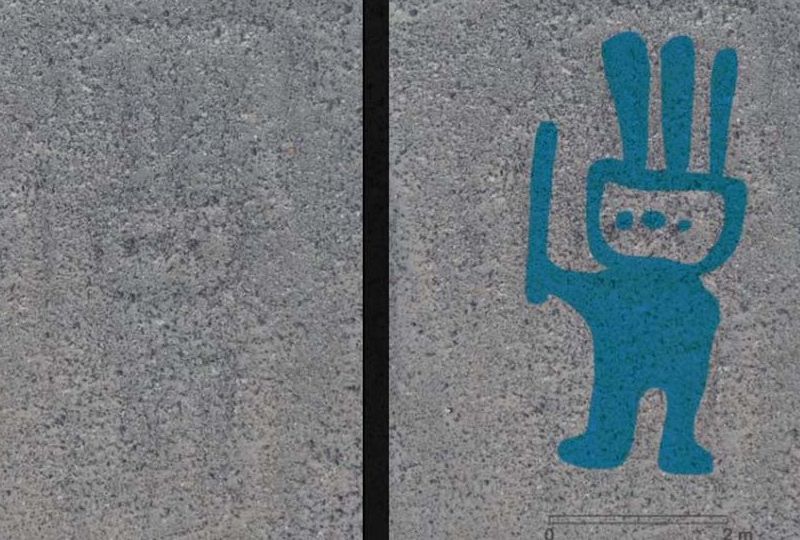In mid-October 2020, reports circulated around the world that a new drawing had been discovered in the Peruvian Nazca desert, famous for its geoglyphs - a 37-meter cat. Let's check if this is true.
Drawings on the Nazca desert plateau have been known for many centuries. Conquistador Pedro Cieza de Leon in 1553 became the first European to describe them. However, the real breakthrough happened in the 20th century with the advent of aviation. First, dozens, and then hundreds of gigantic silhouettes opened up to the gaze of the pilots. It turned out that in an area of 450 km2 “inhabits” about 70 animals, several dozen plants and many different geometric figures, the age of each of which is from 1500 to 2500 years. In 1994, this open-air museum became a UNESCO World Heritage Site.
However, the news about the discovery of a big cat causes well-founded mistrust - could it be that after so many years, aviators, balloonists, satellite operators and simply curious tourists could have overlooked this cute creature, clearly visible from a bird's eye view? Have we become victims of misinformation or a hoax?
Firstly, it would not hurt to get an idea of the rate at which geoglyphs are being found these days. This can be done from press release Yamagata University (Japan), published in November 2019. Over 14 years of research, specialists led by Professor Masato Sakai discovered 142 (!) previously unknown patterns in the vicinity of the plateau. And the Japanese would not be Japanese if they had not used high technology. Together with IBM Japan employees, they taught a computer to recognize characteristic lines in 3D photographs. As a result, the first drawing on the Nazca plateau discovered by artificial intelligence was this Indian:

The width of the picture is only 2 m, the contrast (see left) is very low, which, as we see, did not prevent the computer from coping.
In 2018, local Peruvian archaeologists also made their mark. With the help of drones they found about 50 new images of the Palpa plateau next to Nazca.
As for the cat, about this find reported Ministry of Culture of Peru. The press release states that the discovery was made by accident. The image is located on the slope of a small hill, which served as an observation deck. Narrow (30–40 cm) lines were noticed when considering the site reconstruction plan. And only after archaeologists cleared the ground, an animal that strongly resembled a cat was revealed to their eyes.
Scientists note that the 37-meter drawing was in danger of extinction - the hill is subject to natural erosion. However, measures have already been taken and the surface has been preserved. Archaeologists have no disputes with the dating: presumably, we are talking about the work of the 5th–2nd centuries BC. e. This is evidenced by the style and themes characteristic of the ancient Paracas culture.
You can also admire the cat in video mode:
Thus, despite the apparent improbability, the news about the Peruvian find is true. And such discoveries on the famous plateau are not uncommon even today.
Is it true
Read on topic:
1. https://www.yamagata-u.ac.jp/en/information/info/20191115_01/
2. http://www.bbc.com/travel/story/20111201-travelwise-the-origins-of-perus-mysterious-nasca-lines
4. https://www.theguardian.com/world/2020/oct/18/huge-cat-found-etched-desert-nazca-lines-peru
If you find a spelling or grammatical error, please let us know by highlighting the error text and clicking Ctrl+Enter.










